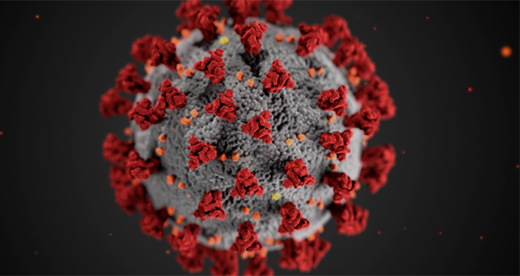
We hosted a virtual roundtable to gain insight from both device companies and contract manufacturers about collaborative forecasting in today’s orthopedic space. Julie Sutton, Supply Chain Director for NN Life Sciences, led the discussion on ways to manage information, processes and behaviors to overcome obstacles and attain mutual success, particularly in the context of ambiguous timelines such as with the current global crisis.
Here in Part 1 of the recapped conversation, we focus specifically on COVID-19. Part 2 breaks down ways that device companies and contract manufacturers use forecasts as well as best practices for greater adoption and accuracy.
The participants included:
- John Kennedy IV, General Manager, Autocam Medical
- Shannon Mills, Supply Chain Director, Zimmer Biomet
- Michele Roskowiak, Demand Planning Manager, Wright Medical
- Greg Stalcup, CEO, SITES Medical
- Julie Sutton, Supply Chain Director, NN Life Sciences
Device Companies
Sutton: What kind of flexibility do you expect your suppliers to plan for, particularly in this situation? What can they be planning for now? How do you see your role in that process?
Mills: We’ve tried to be as open as we possibly can be with our suppliers. It seems like it’s changing daily. I certainly understand that all of our suppliers want to make decisions regarding their cash flow and labor needs, especially if there’s a ramp-up in Q3, Q4 and what that bounce back will be regarding their capacity. We’ve continued to place P.O.s for our top brands; that has not stopped. I’ve wanted to make sure that we continue to spread out the demand and not have a surge later.
I have both demonstrated and future outlooks for every supplier. I examine those outlooks for major dips or spikes, and we’re having proactive conversations when those occur. I certainly understand that we’re in this together. If suppliers have constraints in Q4, I’d ask that they elevate that to us so that we can work together. The priority is open and honest communication.
Roskowiak: I echo what Shannon said. I feel like we are still in an early phase of trying to figure out what’s changing and when we’re going to get back to elective procedures. A lot of analysis is performed by our finance groups and sales teams to put together market equations. By the time this information gets to demand and supply, we’re already behind a bit in our response. April was the first month in which we reflected corporate impact changes—there’s a month delay to when it hits us in supply.
I agree that communication is the priority. We’re asking our suppliers to be clear if they have shutdown issues; what does that look like? What would the recovery look like?
We’re adjusting volumes down and also experiencing issues with our mix. We’re focusing more on trauma products, and those that we didn’t expect to have a surge are having a surge. Fluctuation abounds. We would ask suppliers to be a little patient, because nobody really knows a good way to forecast what’s going to happen.
We’re also trying to figure out how to tighten inventory and push out projects just to stay afloat financially.
Mills: The unknown in the industry is when elective surgeries will come back. It’ll be dependent upon factors such as how much PPE is available, number of hospital beds available, and whether people have insurance or not. That’s been challenging for our group regarding what we can do and how to respond.
Another thing that is important related to the downturn and elective surgeries is that EU Medical Device Regulation (MDR) was delayed by one year. We did a pre-build for EU MDR to mitigate any risks of lead times with BSI—that’s going to net off our requirements as well. So, we have multiple different scenarios ultimately related to COVID that are impacting our supply plan.
Contract Manufacturers
Sutton: How has COVID-19 changed the way that you forecast and work with your partners? What kind of partnering are you seeking from OEMs as the downturn and the uptake occurs?
Stalcup: We’re doing three big things in this area.
First, we’re protecting our financial resources in terms of cash and banking relationships. We also applied for and obtained a Payroll Protection Plan loan to help us protect our team and keep them all here during these uncertain times.
Second, we’re talking more frequently with our device company partners to understand what they’re doing during these times. We are listening to see if they are bullish and aggressive and building for the future or if they are becoming conservative and waiting to see what the future brings. If the demand is lower, ideally, we would get advance notice from our customers and be able to work with them to backfill the losses. Early notice also gives us an opportunity to look for other customers’ products to backfill with. If demand is greater than we can handle, we will work with our OEM partners to prioritize the work.
Third, we’re trying to independently understand the pandemic and how we believe it’s going to impact elective surgeries, both in terms of volume and timeframe. Our goal is to make the uncertainties a little more certain.
In some ways, this event is similar to how we work in general. In the end, it is all about partnership by having a good relationship with our customers and being transparent, which enable us to deliver high quality product on time.
Kennedy: We’re working with our customers, as a lot of them are still trying to understand what the short-, mid- and long-term outlooks are for procedures and surgeries for the various types of devices we’re working on. We’ve also partnered with some local businesses and universities that have been created ways to help address the coronavirus outbreak, and helping where we can.
We hope that our customers will be open and transparent when communicating with us. If a customer’s demand is down, communicating the data and reason behind what they’re seeing and then outlining their needs today is helpful for us.
Sutton: At NN Life Sciences, we’re increasing the amount of communication with our customers and tracking their activities, as well as market research assumptions, and using those two inputs to create different forecast scenarios. These allow us to understand a level of flex capacity that we need to maintain during the downturn of demand.
We’re look forward to preparing for what we all expect to be a demand surge above our previously planned capacity in the aftermath of the pandemic. We’ve also increased the frequency of our control measures, so things that we were reporting monthly, we’re now reporting weekly; things we were reporting weekly, we’re now reporting daily.
We have increased the communication rhythm in the organization to maintain alignment across the entire company among the customer, our sales and our operations as the situation evolves, making sure that we’re controlling that message so that we move as one.
Discussion Takeaways
These five perspectives represent well the voices we’ve heard from others in the industry. COVID-19 is expected to remain a fluid situation for the remainder of 2020 and into 2021. Device companies and their suppliers and service providers will need to maintain strong lines of communication throughout the COVID-19 uncertainty and into the recovery in order to ensure manufacturing needs are met.
HT
Heather Tunstall is a BONEZONE Contributor.




